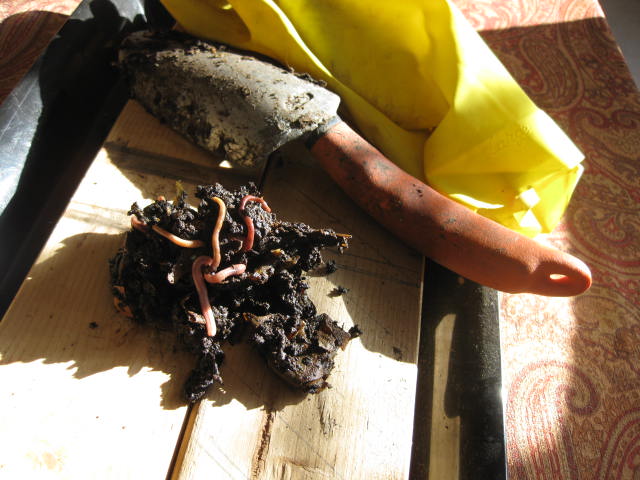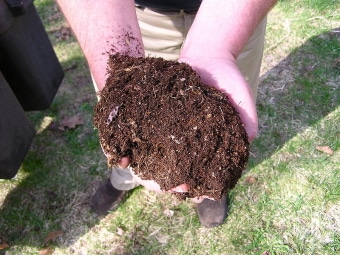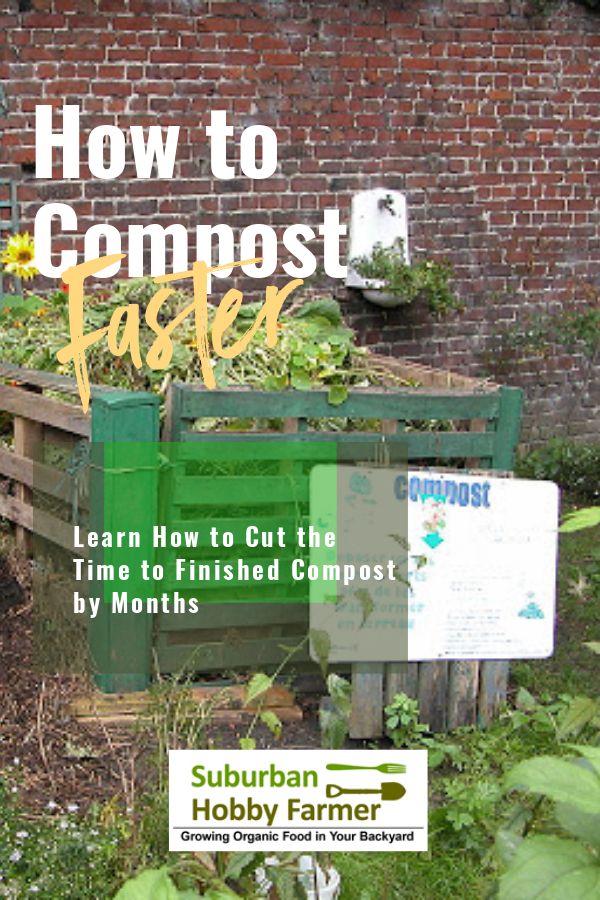Learning how to compost is easy. Just put a bunch of plants in a pile on the ground and wait. Eventually the plants will turn into compost.
But as a backyard fruit and vegetable gardener, you know there’s never enough compost for your plants. So you want your plants to break down into valuable finished compost ASAP!
Tumbling compost bins, good or bad?
Many people get compost tumblers because they promise to help you get finished compost more quickly.
I have a one, and there are times when it comes in handy. The best thing about a tumbling compost bin is it makes it easy to turn the materials so they are properly aerated.
But what I really like about the tumbler is that it keeps the tasty stuff away from the varmints that would go looking for a free meal and scatter kitchen scrapes around my backyard.
I’ve written all about the advantages and disadvantages of a tumbler in the article called Do Tumbling Compost Bins Work.
Certainly tumblers have their advantages, but I’ve found that a compost pile on the ground decomposes faster than in a tumbler.
Keep moisture levels in the pile “sponge wet.”
— Suburban Hobby Farmer
But this is only true if you maintain the pile at the optimum conditions. For example, you need to make sure it’s turned about once a week and kept at the proper moisture level. The optimum moisture level is the same as a wrung out sponge.
One of the main reasons why materials break down on the ground faster than in the tumbler is that worms and other ground dwelling creature can get at the tasty stuff. In the tumbler, you are relying on bacteria only for decomposition.

How to Improve Soil
All the ways I know to improve your soil.
An Ohio State University Extension’s paper called Composting at Home is probably one of the best sources of information I’ve found on the optimum conditions for compost. It discusses all aspects of backyard composting.
Let’s take a sec to get the legal words out of the way. This article may contain affiliate links. That means if you click and buy from my partners, I will make a tiny amount of money at no cost to you. This in no way affects my recommendations.
Both methods have merits
Both tumbler and pile methods have merits. So the best plan is to take advantage of both.
I start my compost in the tumbling bin, and keep it there until it is no longer is recognizable. Then, when it’s decomposed enough, I move it to a pile on the ground. That way, the skunks, mice and other troublemakers are no longer interested.

At this point, I do all the same things I have been doing to maintain a healthy pile. I’m going to:
- Maintain a materials ratio of 60% brown (high carbon) to 40% green (high nitrogen)
- Keep moisture levels in the pile “sponge wet”
- Try to keep the volume at around three feet cubed (27 cu. ft.; 3-4 ft. tall)
- Add a little finished compost to the pile to add microorganisms
- Turn the pile once a week to maintain an air supply for the microorganisms
Here’s a table with nitrogen and carbon percentages that will help you keep the right ratios in your compost pile:
Carbon to Nitrogen Ratio
| Food Wastes | 15:1 |
| Saw Dust, Wood Paper | 400:1 |
| Straw | 80:1 |
| Grass Clippings | 15:1 |
| Leaves | 50:1 |
| Fruit Waste | 35:1 |
| Rotted Manures | 20:1 |
| Cornstalks | 60:1 |
| Alfalfa Hay | 12:1 |
| Source: Oregon State University |
If you are doing all these things, you don’t need Compost Accelerators, which claim to increase the “burn rate” by either adding nitrogen as a food source for the microbes or more microbes to the pile.
Helpful things I’m not doing
There are some other things I’m not doing that could potentially speed the process.
I’m not going to add urine to my pile, which adds urea, a good source of nitrogen. Sorry, I just won’t pee on my pile.
I also won’t shred all my materials. Shredding increases the amount of surface area that the microorganisms can work on, resulting in a more efficient pile.
I will shred some, but not others. I know it takes longer for the non-shredded materials to decompose. Still, I would rather have the weather and the microbes do the work.
One last tactic that I’m no longer doing: I’m no longer keeping a worm composting bin. Vermiculture (a.k.a. worm composting) promises to speed up the transformation of kitchen scraps into valuable worm compost. You can read more about this at worm composting.
Ultimately, putting the pile on the ground has cut months out of my composting time. Starting the compost in the tumbler has helped to keep raccoons and skunks from messing up my yard. Now if I could only get rid of the mice that nest in both the tumbler and the ground pile, I would be all set.
Related articles you might enjoy:

Suburban Hobby Farmer is a participant in the Amazon Services LLC Associates Program, an affiliate advertising program designed to provide a means for sites to earn advertising fees by advertising and linking to amazon.com.